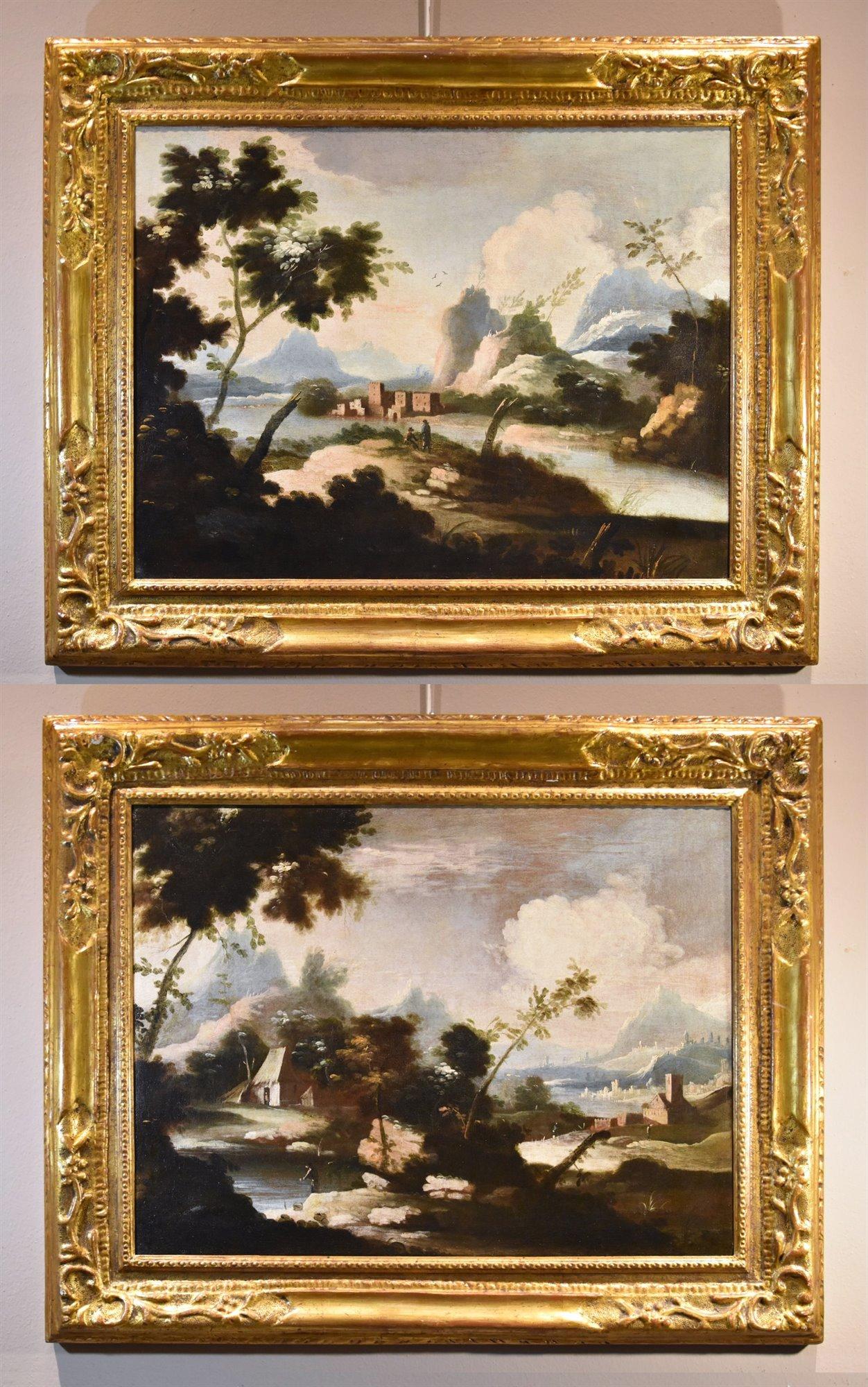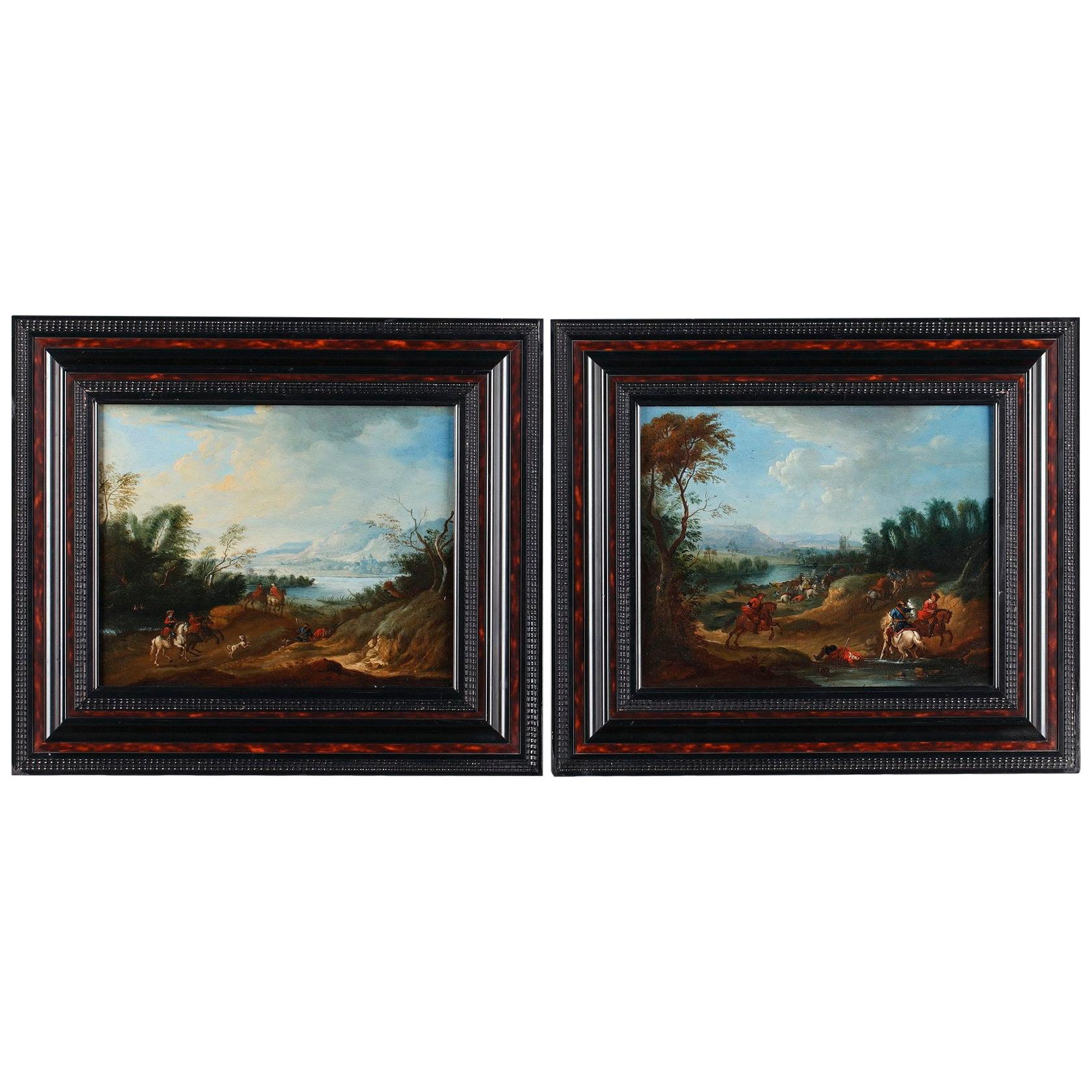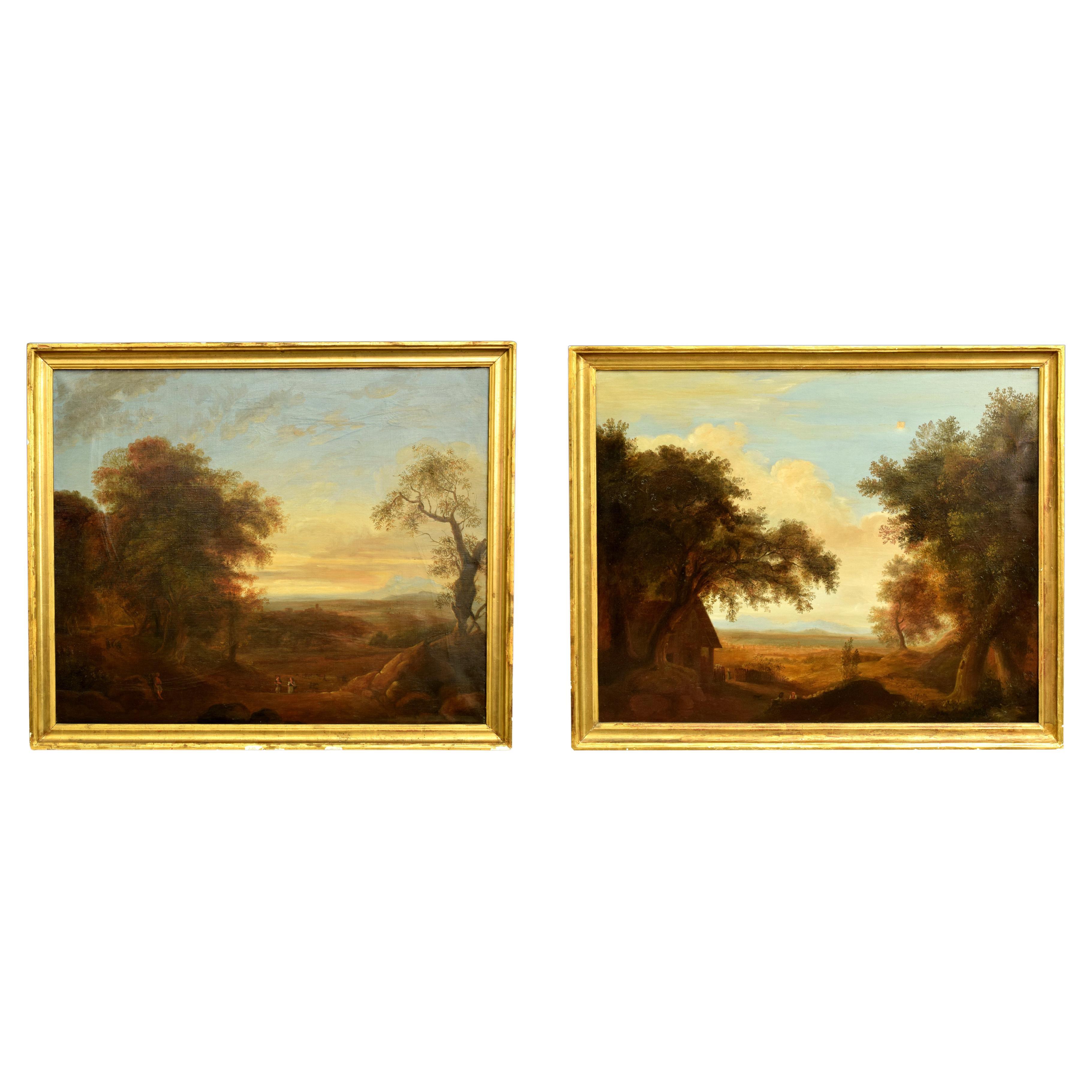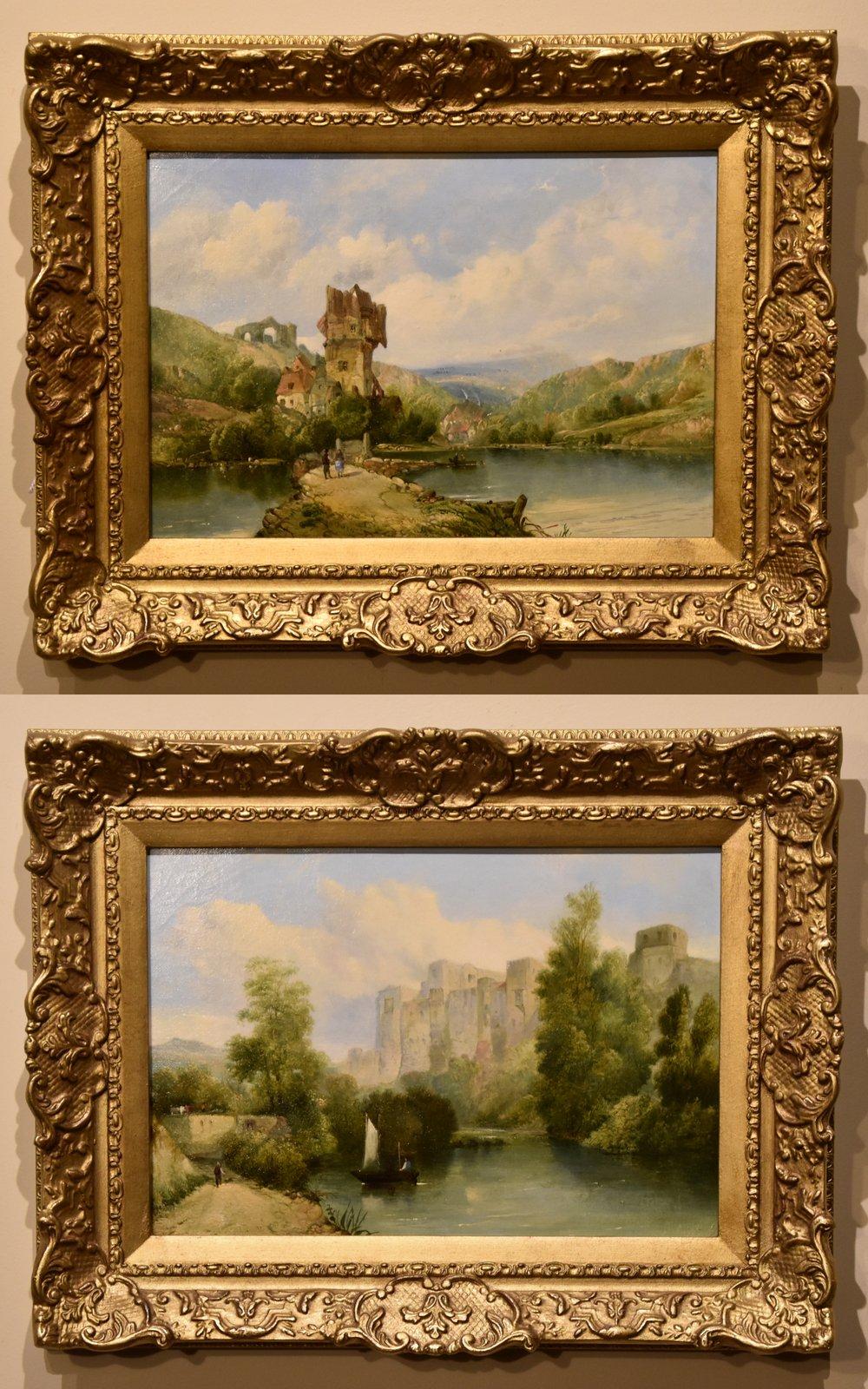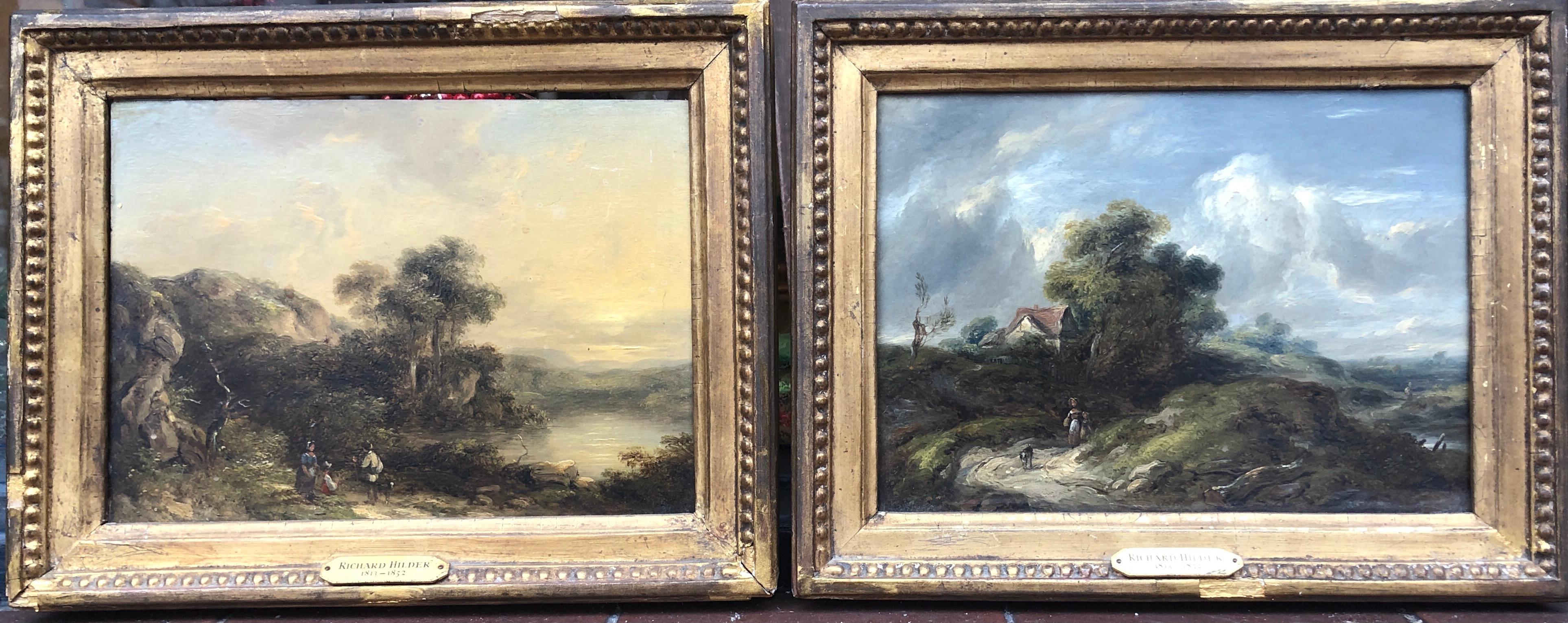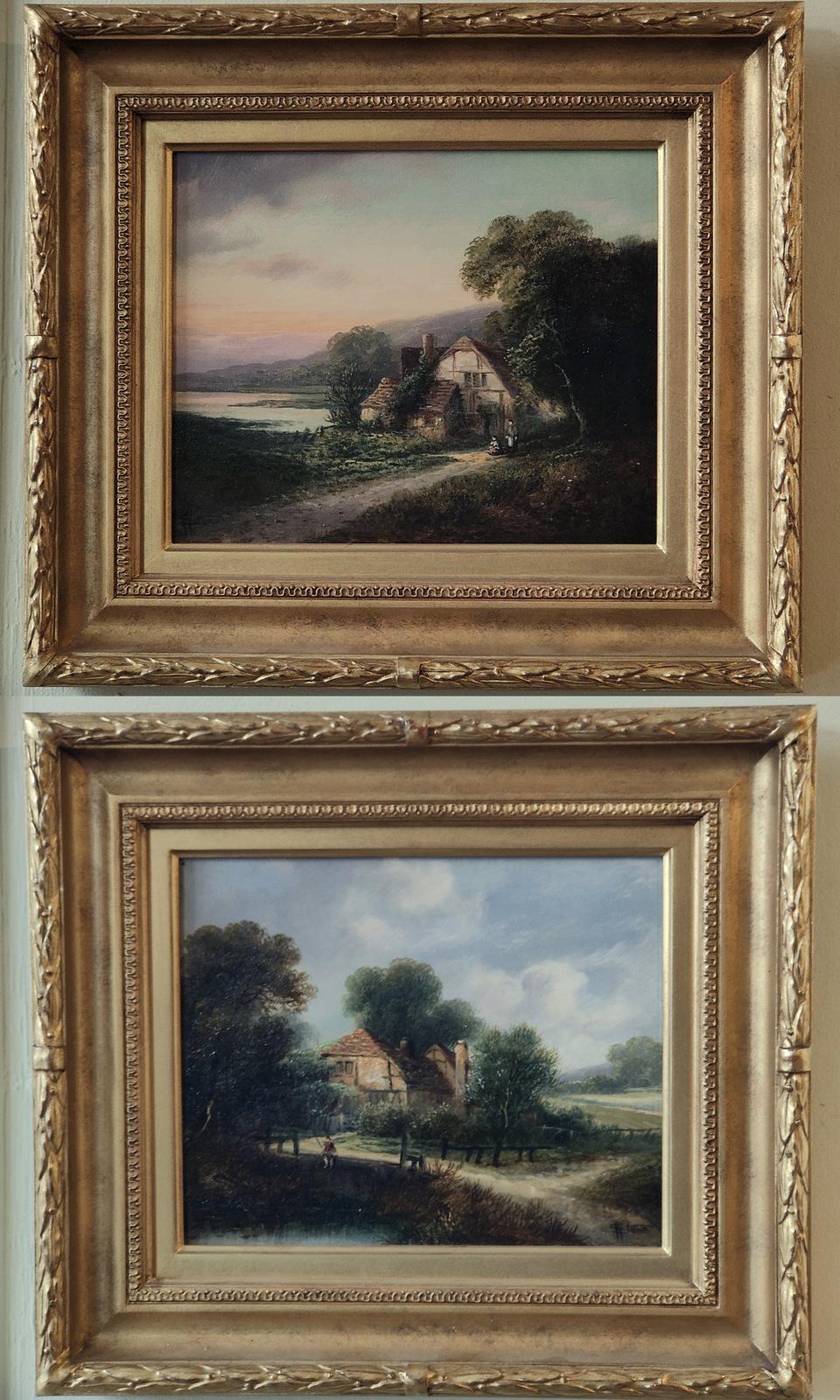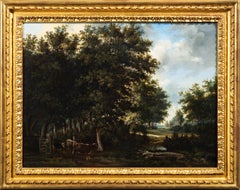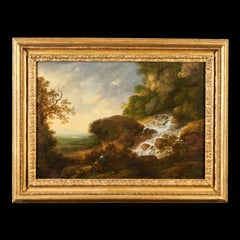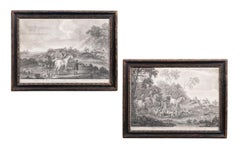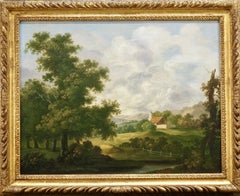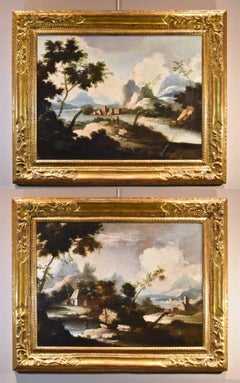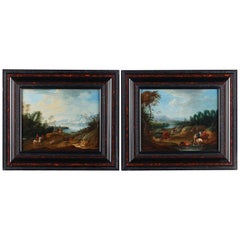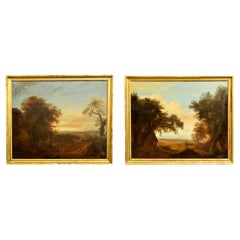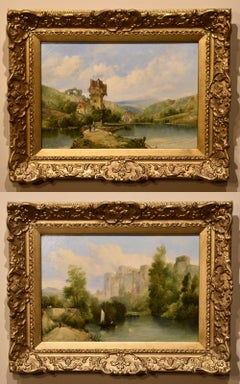Items Similar to A pair of Classical landscapes
Want more images or videos?
Request additional images or videos from the seller
1 of 9
George Smith of ChichesterA pair of Classical landscapes
$12,984.16
£9,500
€11,170.16
CA$18,128.46
A$19,772.23
CHF 10,395.43
MX$239,178.75
NOK 129,721.98
SEK 122,574.94
DKK 83,393.59
About the Item
George Smith of Chichester (Chichester 1714-1776)
Landscape with figures resting by a river; River landscape with figures outside a thatched cottage
Both Signed Geo: Smith
A pair, Oil on canvas
Canvas Size - 12 x 17 in
Framed Size - 17 x 21 in
Provenance
From the collection of Trevor Lowther Brodrick, 11th Viscount Midleton of Peper Harow (1903–1988);
John Mitchell Fine Paintings, London;
Private Collection, UK
George Smith was one of three brothers who were all artists in their native town of Chichester in the mid-18th century, and amongst the first native practitioners of the pure landscape. Their style derives ultimately from the exemplars of Claude Lorraine, but with a curiously English air. They enjoyed a great popularity during the third quarter of the 18th century. Of the three George, was the most prolific and successful, and exhibited frequently at the annual exhibitions of the Society of Artists from 1760 until two years before his death, in Chichester, in 1776.
George's elder brother William (1707-1764) had been sent by the Duke of Richmond to London to train at the St. Martin's Lane Academy as a portraitist in c.1725. He was joined by George, his younger brother, three years later c.1728 where he was instructed in painting. In about 1730, the two brothers were invited by the Sir John Guise 3rd bart. to come to Gloucestershire to paint. They remained in the county for some eight or nine years, painting a variety of pictures including an altarpiece for the Guise chapel at his house Elmore (destroyed). Sir John presumably took advice on his choice of painters from his cousin General John Guise, soldier and connoisseur, who own the splendid collection of Old Masters is now at Christ Church college, Oxford. At some point around 1740, George returned to his native Chichester, and like his brother, was encouraged by the 2nd Duke of Richmond (1701-1750) and subsequently by his son Charles, 3rd Duke (1735-1806), the collector and developer of Goodwood. From this date on he painted a long series of rural landscapes in a highly refined and technically advanced style, where the “finish” was dependent on the careful accretion of subtly-toned glazes. There was an active market for his pictures, which were occasionally painted in collaboration with his younger brother John after the death of William in 1764.
For some years George Smith maintained a studio in London, though his paintings seem always to be inspired by his native Arun Valley. The development of the Society of Arts from 1758 led to the introduction in 1760 of a prize (“premium”) of the substantial sum of £50 for the best landscape painted in England in that year of a size 40 x 50 inches. The Duke was an enthusiastic supporter of the SA, though it is doubtful that his influence was paramount in the awarding of the prize to George Smith: the selection of the winner was by ballot on 1st April 1760, and the name of the artist was kept secret from the voters to ensure fairness. The landscapes by George and his brother were neck-and-neck in the voting, the award finally going to George on the casting vote of the chairman Thomas Brand. The winning picture was then exhibited in the Society's new Great Room in the Strand, where it hung in company with Richard Wilson's Destruction of the Children of Niobe. George again won the premium the following year in 1761; his brother John won the next year and George once more in 1762. They were then disqualified from exhibiting, according to the rules, in subsequent years.
Their reputation in London thus established, the brothers returned to their native Chichester, which was experiencing a economic expansion in what were prosperous years, and many paintings were sold to successful tradesman – encouraged, no doubt, by the Duke's example. In 1767, a large landscape was priced at 40 guineas; a small picture was 7 guineas. Gainsborough was receiving similar amounts for landscapes at the time. Lady Sarah Lennox noted the prices George's paintings were fetching after his death in 1776: she reports that the pictures were selling “at a little higher price than they did”, but predicted that they would soon move higher still. She quotes the “large finished pictures” at £60, £40, £30 and £20, but she was still interested in buying the “unfinish't” sketches remaining in his studio.
Smith's critical reputation was at its apogee in the 1760's, and after his death his work fell slowly into first neglect and then obscurity. His first premium painting for which he received 50 guineas was sold in Christies on 10th February 1838 for just 20 guineas. His reputation was revived only in the 1980's when the seminal exhibition at the Pallant House Gallery in Chichester once more drew attention to the masterful technique and gentle observation that typifies his work, which remains at a consistent and high standard throughout his career. They are appreciated today for their pastoral charm and picturesquely English idiom.
- Creator:George Smith of Chichester (1714 - 1776)
- Dimensions:Height: 17 in (43.18 cm)Width: 21 in (53.34 cm)
- Medium:
- Movement & Style:
- Period:
- Condition:
- Gallery Location:Stoke, GB
- Reference Number:1stDibs: LU446316164972
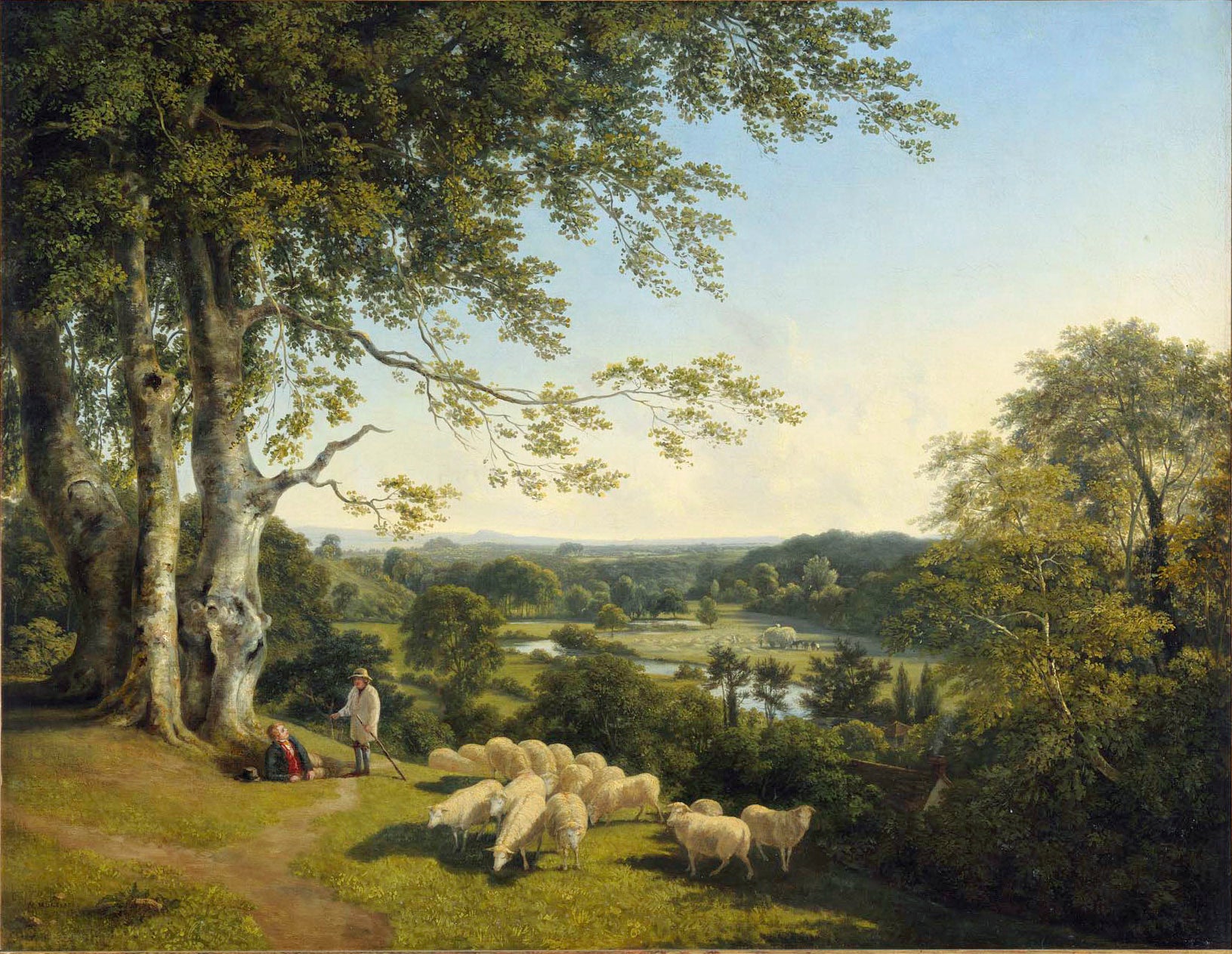
About the Seller
5.0
Recognized Seller
These prestigious sellers are industry leaders and represent the highest echelon for item quality and design.
Platinum Seller
Premium sellers with a 4.7+ rating and 24-hour response times
Established in 2009
1stDibs seller since 2016
189 sales on 1stDibs
Typical response time: 1 hour
Associations
LAPADA - The Association of Arts & Antiques DealersInternational Confederation of Art and Antique Dealers' AssociationsThe British Antique Dealers' Association
- ShippingRetrieving quote...Shipping from: Andover, United Kingdom
- Return Policy
Authenticity Guarantee
In the unlikely event there’s an issue with an item’s authenticity, contact us within 1 year for a full refund. DetailsMoney-Back Guarantee
If your item is not as described, is damaged in transit, or does not arrive, contact us within 7 days for a full refund. Details24-Hour Cancellation
You have a 24-hour grace period in which to reconsider your purchase, with no questions asked.Vetted Professional Sellers
Our world-class sellers must adhere to strict standards for service and quality, maintaining the integrity of our listings.Price-Match Guarantee
If you find that a seller listed the same item for a lower price elsewhere, we’ll match it.Trusted Global Delivery
Our best-in-class carrier network provides specialized shipping options worldwide, including custom delivery.More From This Seller
View AllHerding cattle through a wooded river landscape
Located in Stoke, Hampshire
James Stark (1794-1859)
Herding cattle through a wooded river landscape
Oil on canvas
Canvas Size 18 x 24 in
Framed Size 23 x 29 in
James Stark (1794-1859): A Pioneer in Landscape P...
Category
18th Century Old Masters Landscape Paintings
Materials
Oil
$6,765 Sale Price
37% Off
Landscape with goatherds near a waterfall
Located in Stoke, Hampshire
George Smith of Chichester (1714-1776)
Landscape with goatherds near a waterfall
Oil on canvas
Signed 'Geo. Smith' lower left
Canvas Size 18 x 25 i...
Category
18th Century Landscape Paintings
Materials
Oil
$12,300 Sale Price
25% Off
'Digging for the Fox' & 'Death of a Fox'
By James Seymour
Located in Stoke, Hampshire
James Seymour (1702-1752)
Digging for the Fox
Death of the Fox
A pair of Mezzotints
Image size 10 x 14 in
Framed size 12 1/2 x 16 1/2 in
James Seymour was an English artist renowned...
Category
18th Century Old Masters Animal Paintings
Materials
Mezzotint
A PAIR of Landscapes.
By Abraham Pether
Located in Stoke, Hampshire
Abraham Pether (1756-1812)
'Landscape near Chichester' and 'Drovers in a landscape'
A pair, Oil on canvas
One signed and inscribed 'Chichester'
Canvas size - 16 x 20 5/8 in
Framed si...
Category
18th Century Landscape Paintings
Materials
Oil
$14,159 Sale Price
20% Off
Italian landscape with Monte Socrate (after Jan Both)
Located in Stoke, Hampshire
Richard Bankes Harraden (1778-1862)
Italian landscape with Monte Socrate (after Jan Both)
Signed and dated 1823 on the reverse
Oil on canvas
Canvas size ...
Category
18th Century Old Masters Landscape Paintings
Materials
Oil
$10,387 Sale Price
28% Off
A wooded landscape with a traveller on a path
By Charles Towne
Located in Stoke, Hampshire
Charles Towne (1763-1840)
A wooded landscape with a traveller on a path
Signed "By CT" lower left
Oil on canvas
23 1/8 x 19 1/2 in
Provenance
Private Collection, West Sussex
Charle...
Category
Early 19th Century Victorian Landscape Paintings
Materials
Oil, Canvas
$3,225 Sale Price
56% Off
You May Also Like
Landscapes Couple Ricci Paint 18th Century Oil on canvas Old master Italy
Located in Riva del Garda, IT
Marco Ricci (Belluno 1676 – Venice 1730)
Circle of Pair of Arcadian landscapes with figures
Oil on canvas 56 x 72 cm. - Framed 77 x 93 cm.
This pair of charming landscapes, ex...
Category
18th Century Old Masters Paintings
Materials
Oil
$9,617 Sale Price
20% Off
Two Landscapes Attributed to Elias Martin
Located in Paris, FR
Pair of panels featuring battle scene in a landscape and soldiers in a landscape. The two scenes have a similar composition, with a foreground framed by trees and animated with figur...
Category
Antique Late 18th Century Swedish Neoclassical Paintings
Materials
Oak, Paint
Landscapes, Xalapa, Mexico, Pair of Oils on Canvas, Spanish School, Ca 1840
Located in Madrid, ES
Landscapes, Xalapa, Mexico. Pair of oils on canvas. Spanish school, around 1840.
Provenance: Conde de la Cortina collection, Jalapa, Mexico.
Couple of landscapes framed within the Spanish school of the first half of the 19th century, with a clear romantic affiliation. Both evidence the knowledge of the Dutch classicist landscape, one of the main influences on the Spanish romantic landscape. Thus, we see compositions in "V", closed on the sides and open in the center, very low horizons that allow a wide development of the sky, spaces built in depth based on successive planes subtly differentiated by light and color, and small figures perfectly integrated into the natural setting. In addition, the skies are scenographic and dramatic, with low clouds behind which the golden light characteristic of the classicist landscape filters.
One of the most radical aspects of romantic painting was the attempt to replace large canvases with historical or religious themes with landscapes. They wanted the pure landscape, almost figureless or totally devoid of them, to achieve the heroic significance of history painting. They were based on the idea that human feeling and nature should be complementary, one reflected in the other. In other words, the landscape should arouse emotion and transmit ideas. Thus, landscapers like the author of these canvases tried to express their feelings through the landscape, instead of imitating it. The romantic landscape had two main aspects: the dramatic one, with turbulent and fantastic views, and the naturalistic one, which emphasized images of a peaceful and serene nature. This second conception is what we see embodied in these works; the painter tries to communicate a religious reverence for the landscape, nature in its fullness. In fact, the author's own use of light here conveys a foggy, cloudy, dreamlike atmosphere that invites the viewer to meditate and contemplate himself in the landscape. The romantic landscape is constituted, however, by manifestations of very different types and not comparable to each other; it does not affect all national schools equally, staying more faithful to tradition in schools such as the French or the Dutch. Thus, in this canvas we do not find the grandiose scenery of the British and Germans, the steep mountains or the monumental Gothic ruin...
Category
Antique Mid-19th Century South American Neoclassical Revival Paintings
Materials
Other
Oil Painting Pair by Alfred Henry Vickers "Continental Views"
Located in Mere, GB
"Continental River Views" Pair by Alfred Henry Vickers 1836-1919. He was a popular painter of rustic landscapes and continental river scenes. The ...
Category
19th Century Landscape Paintings
Materials
Oil
A Beautiful Pair of Early 19th Century Landscapes
Located in London, GB
Richard Hilder (1813-1852)
Pair of Landscapes
Oil on Panel
9 1/4 X 11 3/4 inches, Framed
Provenance: Important Private Collection
Richard H. Hilder was a landscape painter and oc...
Category
Early 19th Century Landscape Paintings
Materials
Oil
Oil Painting by William Stone "Morning and Evening"
By William Stone
Located in Mere, GB
Oil Painting by William Stone "Morning and Evening" 1835 -1917 A Birmingham landscape with buildings. Regularly exhibited at the Royal Birmingham society of artists. Both oil on canvas.
Dimensions unframed:
height 9" x width 11"
Dimensions framed 15...
Category
19th Century Landscape Paintings
Materials
Oil
More Ways To Browse
Antique Classical Painting
18th Century Painting Of A Lady
Classical Century Oil Painting
Christ Church Oxford
River Landscape With Cottage
Smith Brothers
Chichester Painting
George Smith Of Chichester
Greenwich London
H Mary
Ibiza Painting
Japanese Garden Painting
Jenkins Oil Painting
Landscape Painting By W Hampton
Large British Painting Modern
Mid Century Tropical Art
Oil Painting Richmond
Oil Paintings Of Homes
